The Courtauld Gallery’s Abstract Erotic is a delight for two reasons – because an institution that has often seemed locked in the past is now embracing change and also because the sculptures on show are clever, suggestive and subversively funny.
For the first time since 1966, the exhibition brings together Louise Bourgeois, Alice Adams and Eva Hesse – the three women included by New York critic Lucy Lippard in a show of artists using offbeat materials like plaster, latex, rubber and papier maché. Reacting against the clean lines and sharp edges of the Minimalism currently in fashion, they were searching for an aesthetic that, in its scruffy eccentricity, felt more humane. Lippard remarked that, in retrospect, she was: “looking for ‘feminist art’’’.
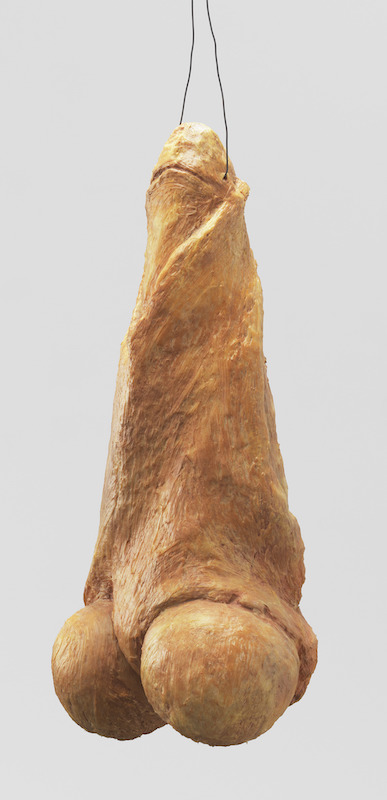 “My work,” said Bourgeois, “is a repeated attempt at seducing somebody” and in an absurdist way, the whole show is about seduction. Some of the sculptures are overtly sexual, most subliminally so. Bourgeois’ Fillette (Little Girl) 1968-99 (pictured right), for instance, is a sepia coloured prick and balls made of rubber and hung from wire like a prize catch.
“My work,” said Bourgeois, “is a repeated attempt at seducing somebody” and in an absurdist way, the whole show is about seduction. Some of the sculptures are overtly sexual, most subliminally so. Bourgeois’ Fillette (Little Girl) 1968-99 (pictured right), for instance, is a sepia coloured prick and balls made of rubber and hung from wire like a prize catch.
The spherical testicles could also be seen as breasts. Bourgeois loved this ambiguously sexed sculpture; a wonderful photograph by Robert Mapplethorpe shows her grinning gleefully and clutching it under her arm like a mascot. And glee is the kind of response she wanted the sculpture to generate.
While Bourgeois is now a household name, Eva Hesse has become a cult figure, having sadly died in 1970 from brain cancer, aged only 34. Alice Adams, on the other hand, has never shown in this country before, so her work is a revelation.
She uses industrial materials picked up from Manhattan building sites or bought in hardware stores. Who’d have thought, though, that chain link fencing could be manipulated into an ethereal shape suggestive of limbs, tubes and sea-creature couplings?
She studied weaving and to create 22 Tangle, 1964-68, threaded lengths of unwieldy steel cable through a cylinder of chain link fencing to create a heavy-duty collar that is constricting yet as decorative as a ruff (Pictured below, with Big Aluminium 2, 1965). And Threaded Grid 1964 is a drain plate through which lengths of steel cable are looped like unruly coils of hair. I’d love to see more of these paradoxical works.
It’s a joy to encounter Hesse’s globular sculptures again. “Absurdity is the key word,’ she said of these awkward lumps; suspended inside fishing nets are parcels reminiscent of sagging breasts, internal organs or even the weekly shop of fruit and veg. 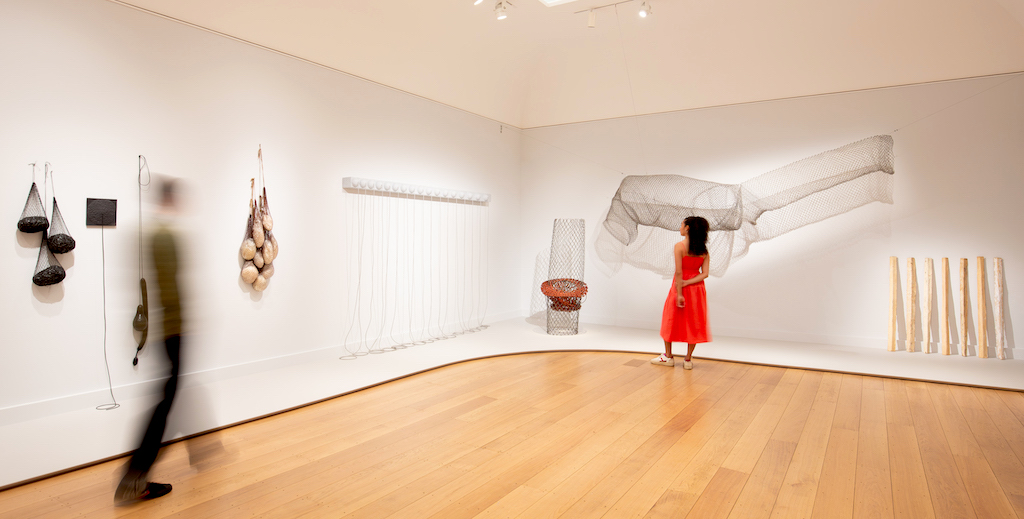 Addendum, 1967, is a row of papier maché breasts from which long chords hang down to the ground like streams of milk (Pictured above). It’s an absurdist riposte to the Minimalists – especially to their love of repetition and insistence on “pure” abstraction devoid of references to the body or the messy realities of daily life. Along with these familiar pieces is a wonderful drawing from 1965 in which mechanical shapes and pod like forms are in surreal dialogue.
Addendum, 1967, is a row of papier maché breasts from which long chords hang down to the ground like streams of milk (Pictured above). It’s an absurdist riposte to the Minimalists – especially to their love of repetition and insistence on “pure” abstraction devoid of references to the body or the messy realities of daily life. Along with these familiar pieces is a wonderful drawing from 1965 in which mechanical shapes and pod like forms are in surreal dialogue.
Louise Bourgeois needs no introduction, but these early sculptures are less well known than her later installations and giant spiders. Avenza 1969 takes several forms. On show is a latex and plaster mound resembling a jelly in the shape of multiple breasts; a photograph shows Bourgeois wearing a fabric version that turns her into an ungainly Artemis figure. Downstairs is a separate exhibition of her drawings which includes numerous explorations of the same theme and also a beautiful watercolour that introduces the heap as another form worth exploring (main picture).
Several sculptural versions of the heap are included in Abstract Erotic. Coils of latex or resin-coated hemp are wound into dark brown, turd-like piles. In Le Regard (The Gaze), 1963, the mound is opened up by a large gash resembling a mouth or vagina to expose a fleshy interior that looks raw and vulnerable, yet strangely inviting.
Hanging Janus,1968, is another sexually charged piece. Two drooping spheres suggestive of both breasts and glans penises are cast in black patinated bronze except, that is, for the balls which are very shiny as though from heavy fondling. If you find the sculpture obscene, though, the laugh is on you; since nothing is specified, your mind is responsible for generating any smutty associations.
With its playfully eroticism, the work of all three artists seems to be testing the boundaries of what can be considered art – asking if sculpture has to be beautiful, rational and high-minded or whether it can accommodate the half-formed or misshapen impulses that arise from the unconscious. And the answer, of course, is a resounding “Yes!”
- Abstract Erotic and Louise Bourgeois: Drawings from the 1960s are at the Courtauld Gallery until 14 September
- More visual arts reviews on theartsdesk



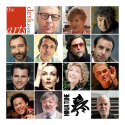

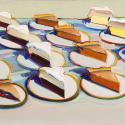


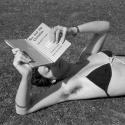
![SEX MONEY RACE RELIGION [2016] by Gilbert and George. Installation shot of Gilbert & George 21ST CENTURY PICTURES Hayward Gallery](/sites/default/files/styles/thumbnail_125_x_125_/public/mastimages/Gilbert%20%26%20George_%2021ST%20CENTURY%20PICTURES.%20SEX%20MONEY%20RACE%20RELIGION%20%5B2016%5D.%20Photo_%20Mark%20Blower.%20Courtesy%20of%20the%20Gilbert%20%26%20George%20and%20the%20Hayward%20Gallery._0.jpg?itok=3oW-Y84i)
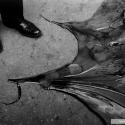
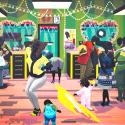

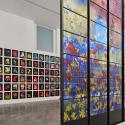

Add comment